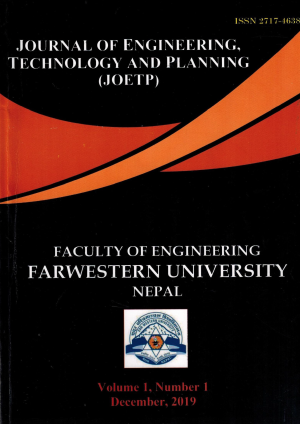Status and Potential of Resource Recovery from Municipal Solid Waste in Kathmandu Valley, Nepal
DOI:
https://doi.org/10.3126/joetp.v1i0.38239Keywords:
Resource recovery, Municipal solid waste, Scrap shop, Recycling, KathmanduAbstract
Current waste management strategies are shifting from waste disposal to recycling and recovery and are considering waste as a potential new resource. This paper aims to quantify reusable and recyclable fractions with status of material recovery from municipal solid waste (MSW) in Kathmandu Valley of Nepal. 550 households, 110 institutions and 110 commercial establishments were sampled to compute the generation, composition and quantify reusable and recyclable fraction of solid waste. In addition, 120 scrap shops were surveyed randomly from Kathmandu Valley to estimate the amount of resource recovered for economic benefits. As per results, the average per capita MSW generation can be estimated at range of 0.25 kg day-1 to 0.47 kg day-1 in municipalities of Kathmandu Valley. Based on these generation rates and population for the year 2011, the total MSW generation of the five municipalities of Kathmandu Valley was estimated to be 620 metric tonnes day-1. The major content of reusable and recyclable materials in MSW comprised with an average of 44% that is equivalent to 271 metric tonnes day-1 among which only 52% (i.e. 140 metric tonnes day-1) of these materials were found to be recovered during survey. The key materials that have been recovered are papers, plastics, metals, glasses, and batteries. Recovery of reusable and recyclable materials not only helps to minimize the quantity of solid waste for land filling, but also provides a potential source of livelihood for the urban poor.
Downloads
Downloads
Published
How to Cite
Issue
Section
License
Copyright © Faculty of Engineering, Far Western University

